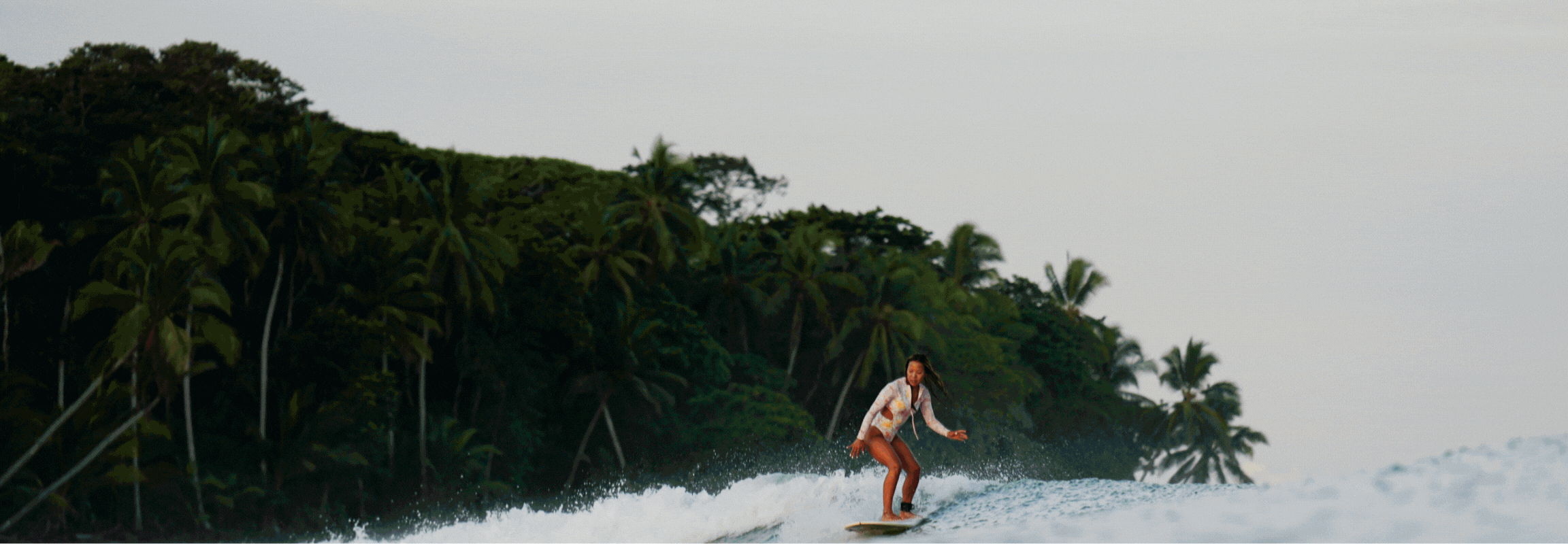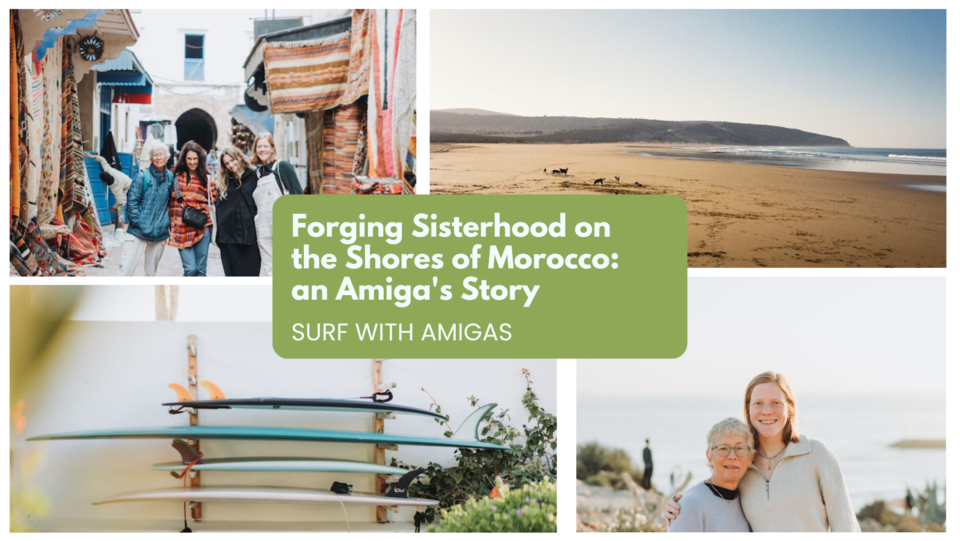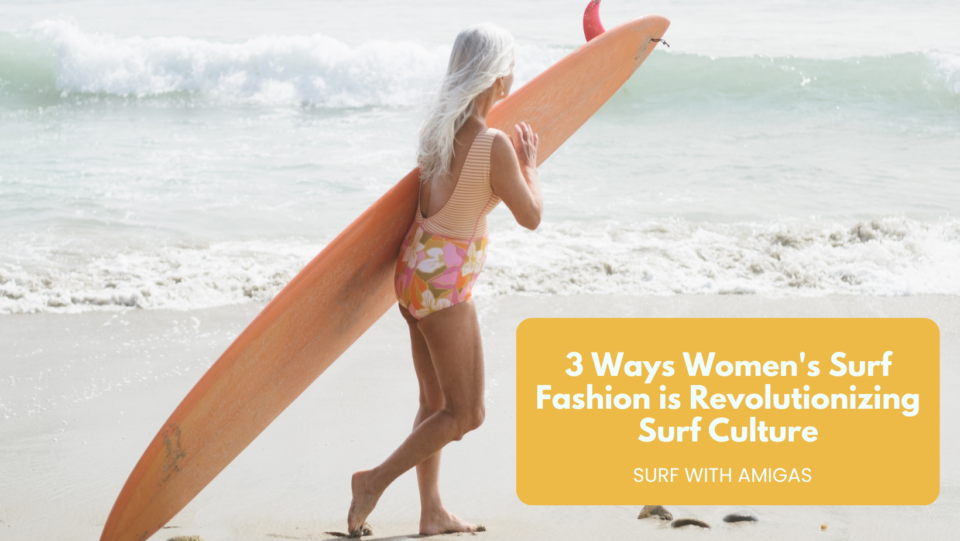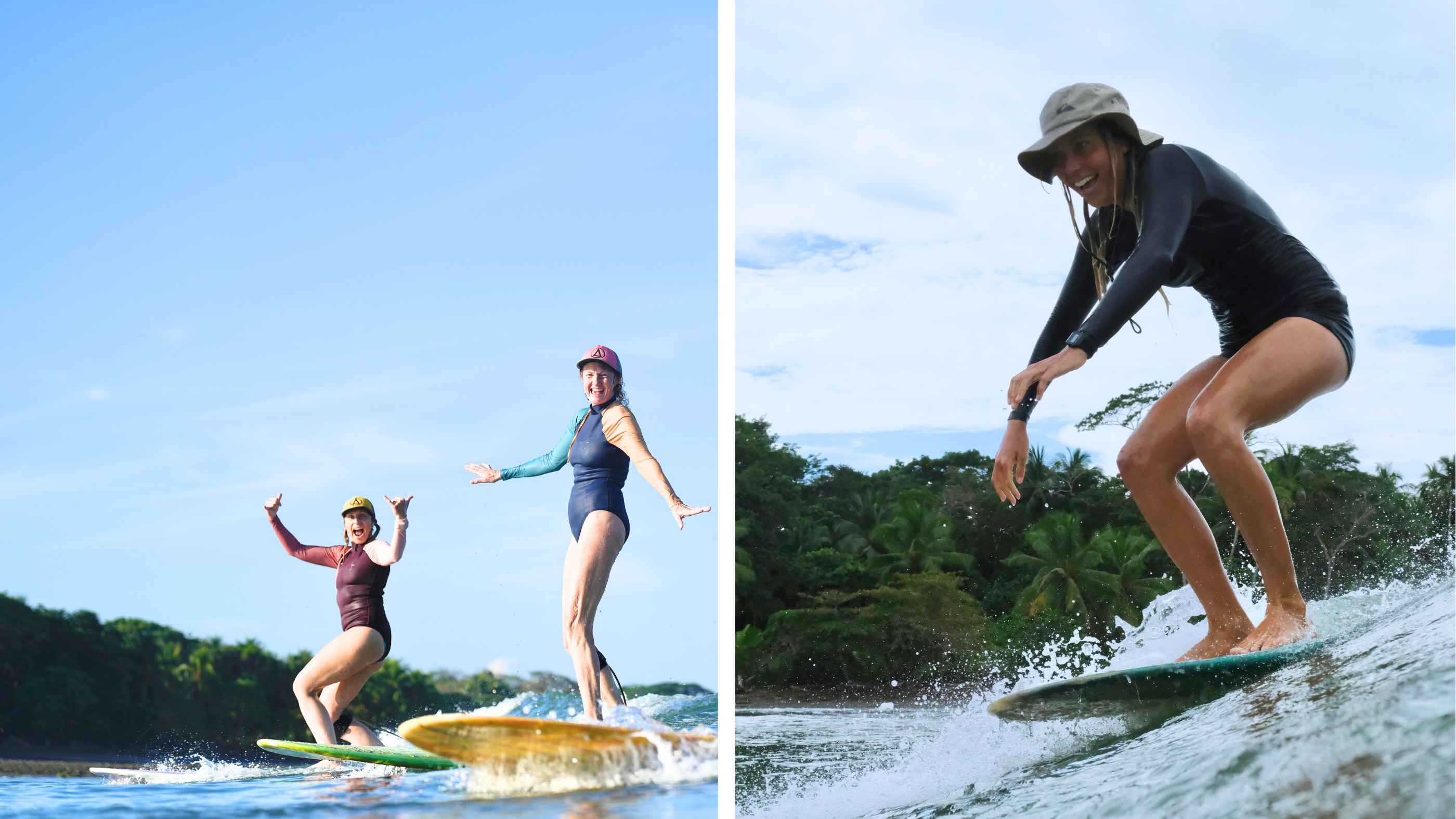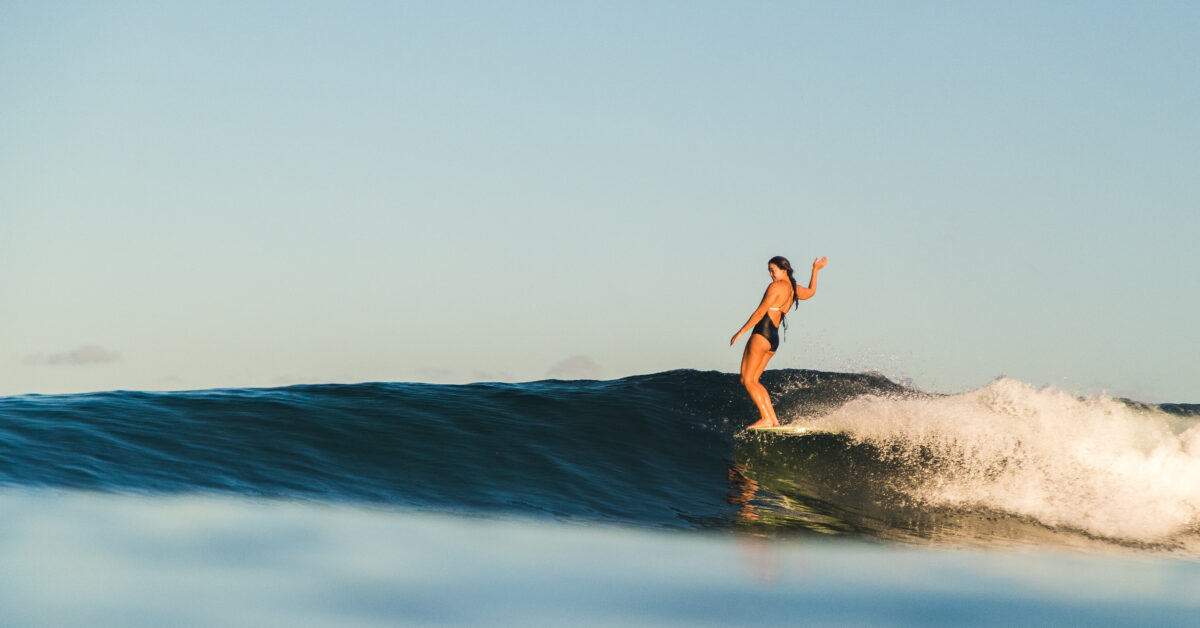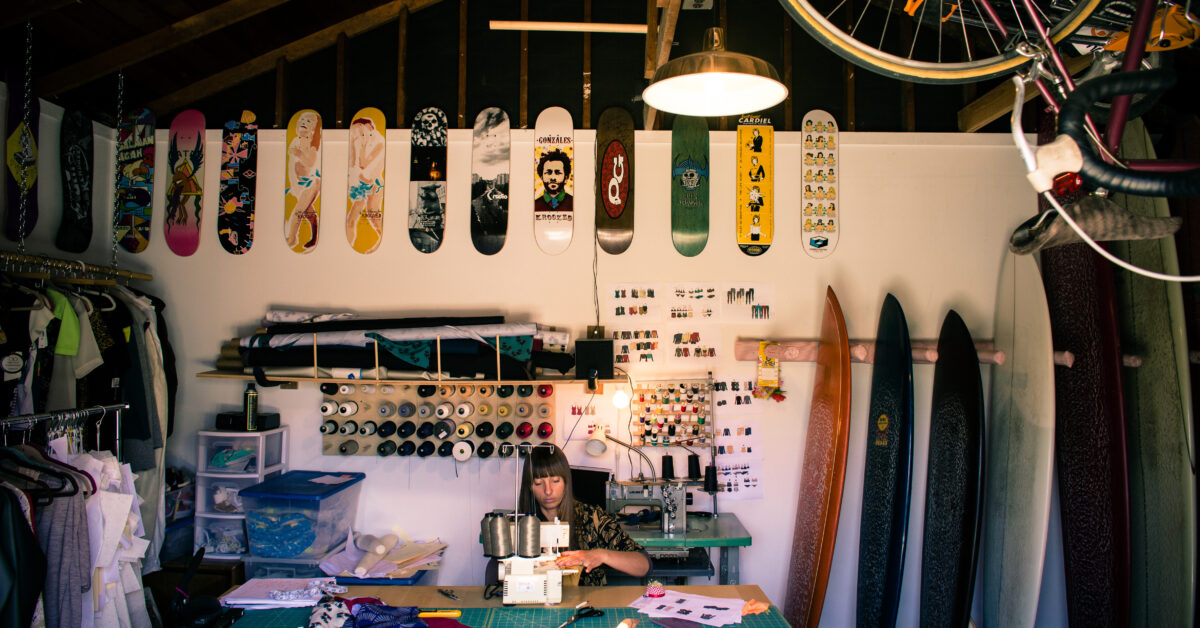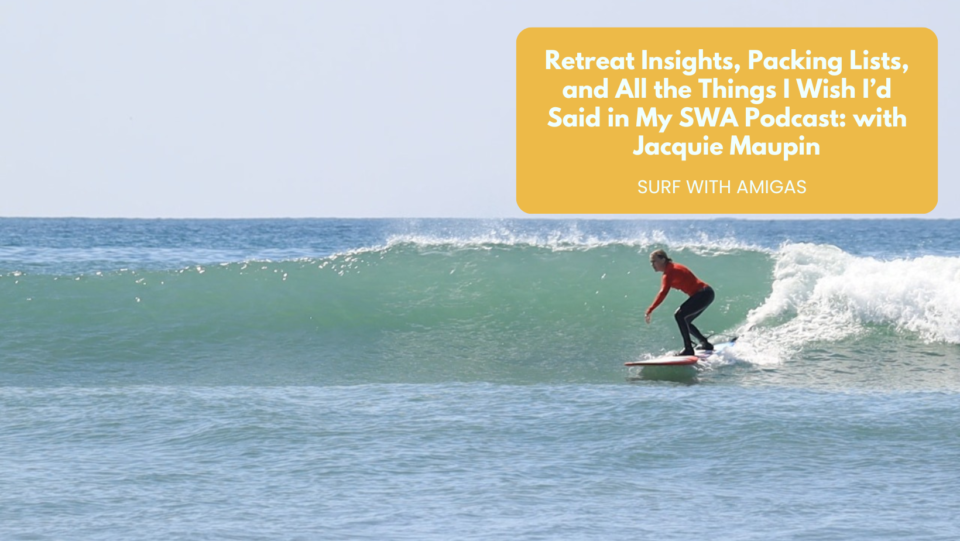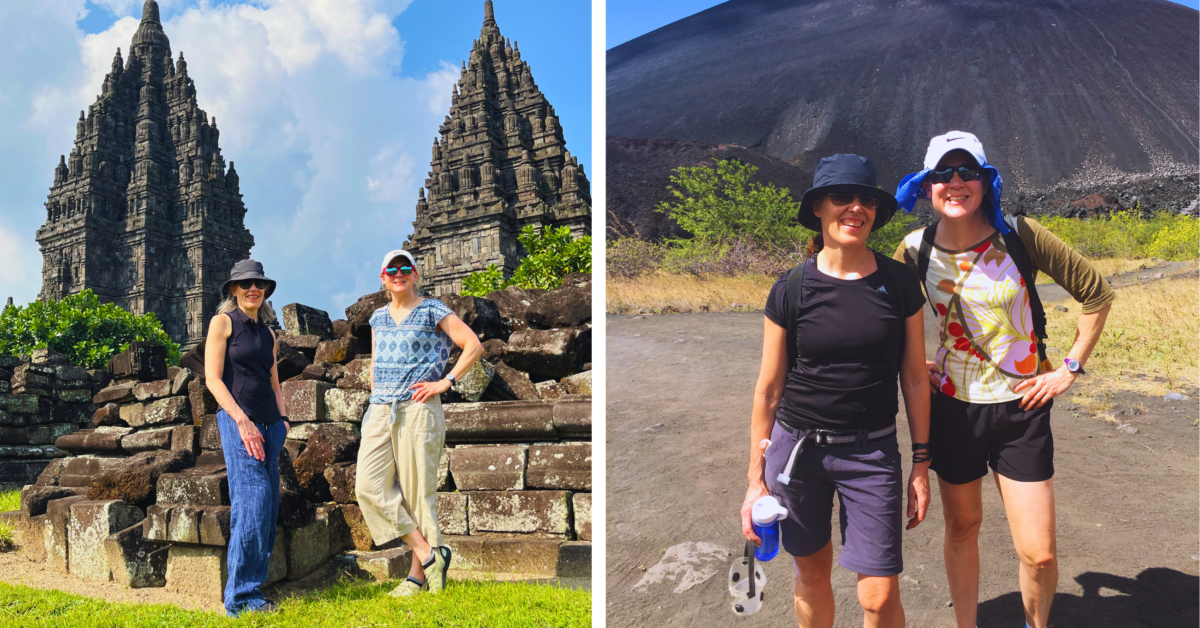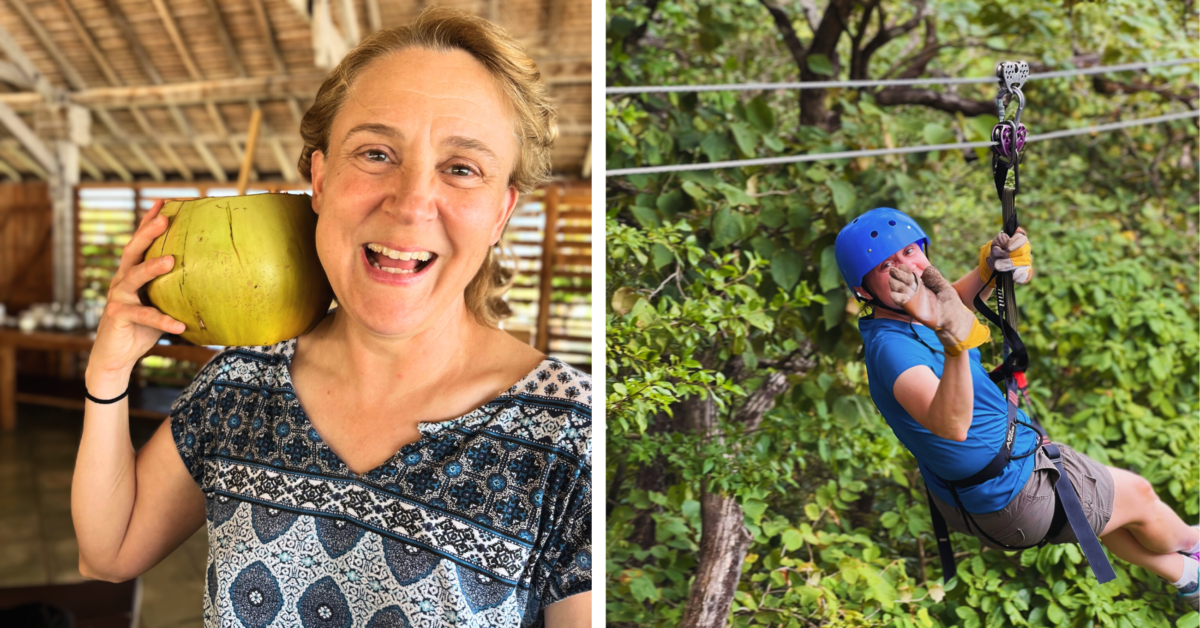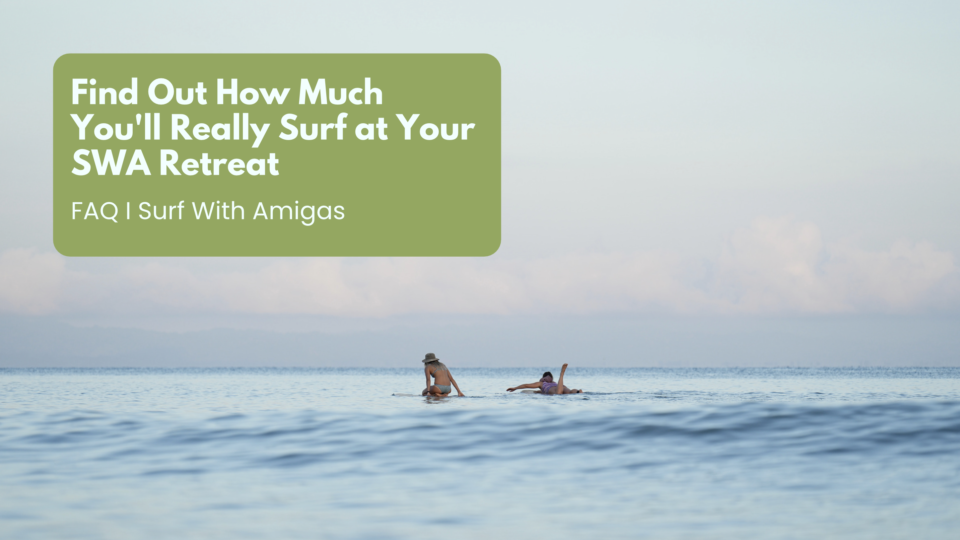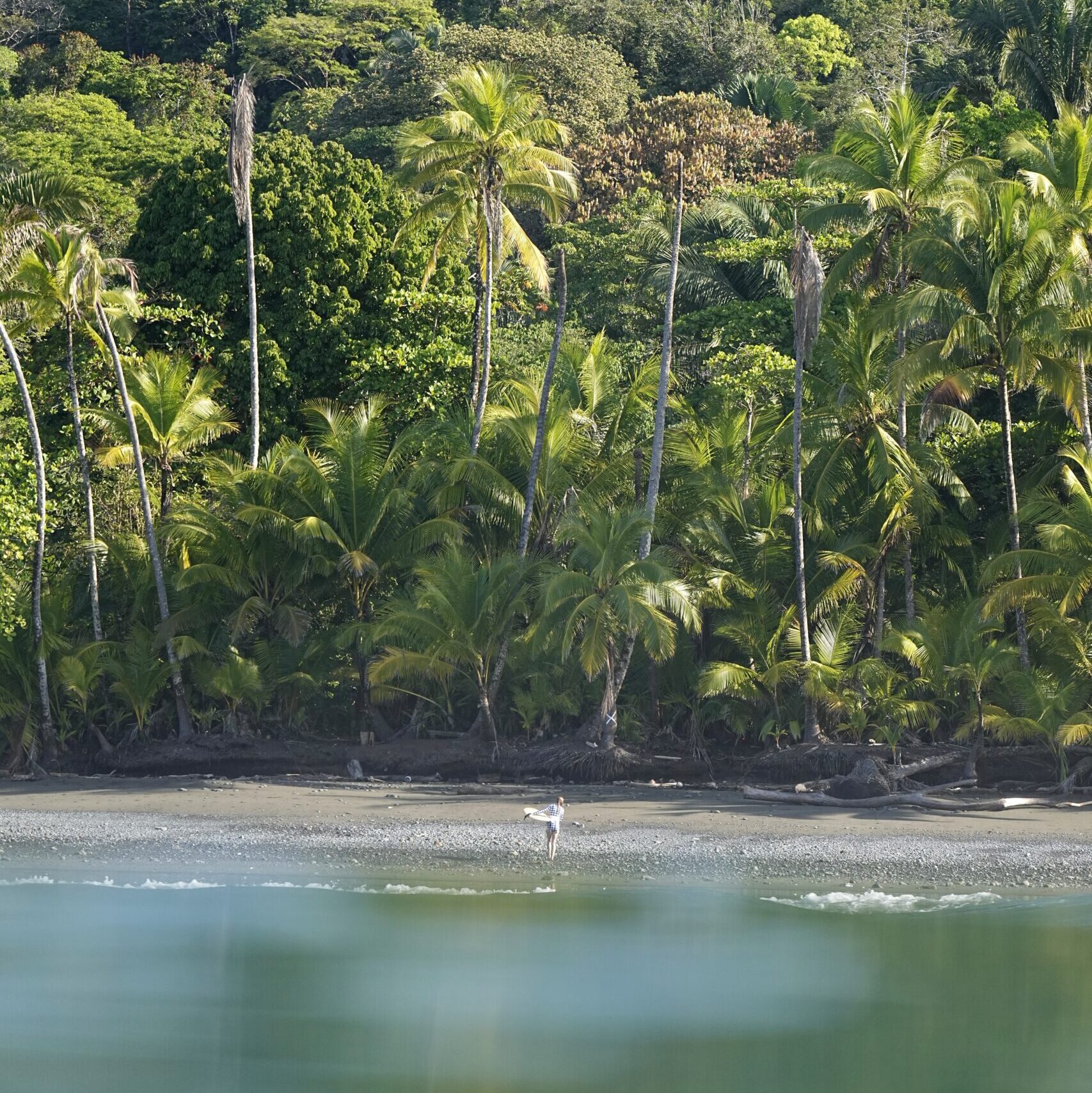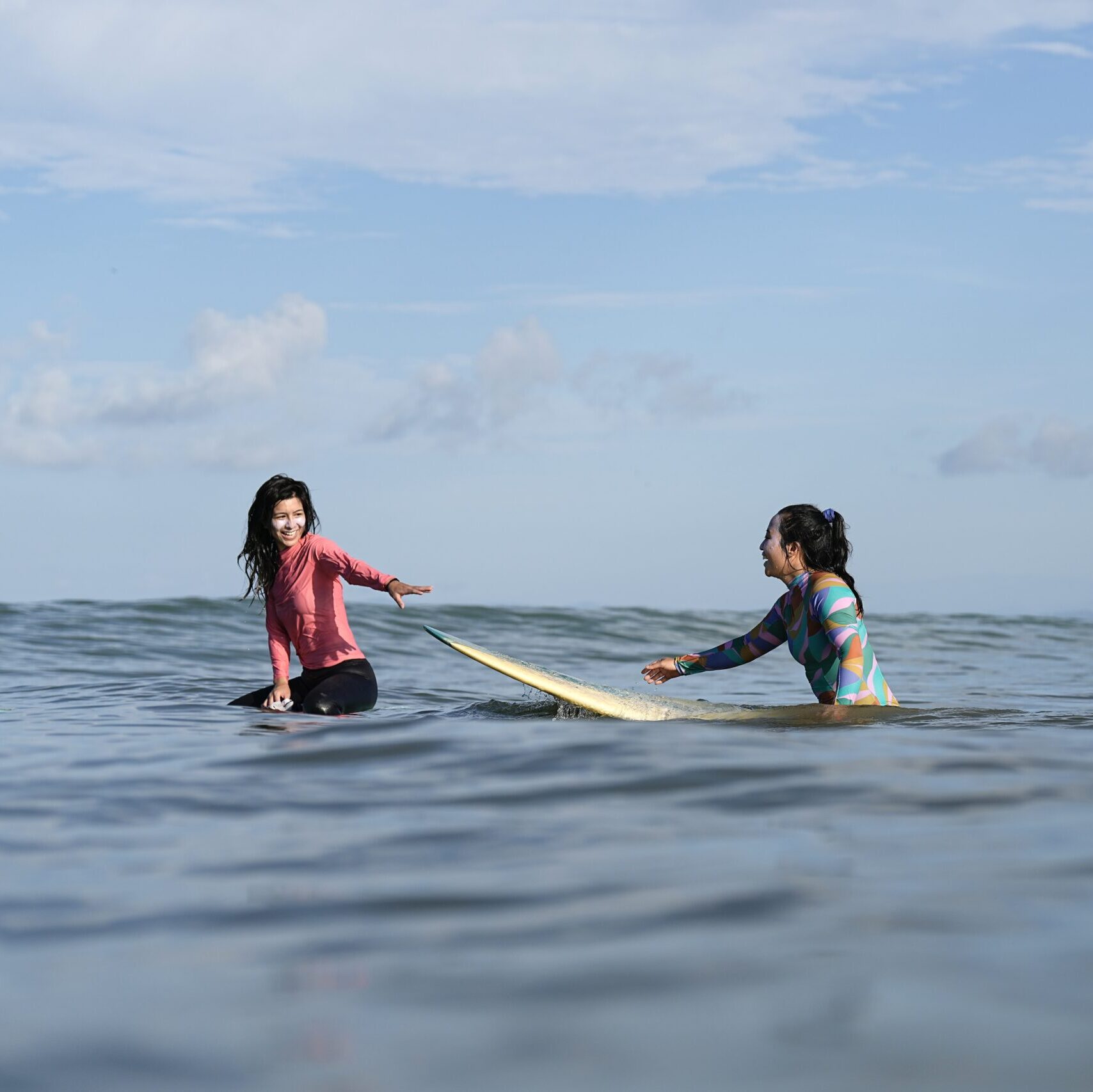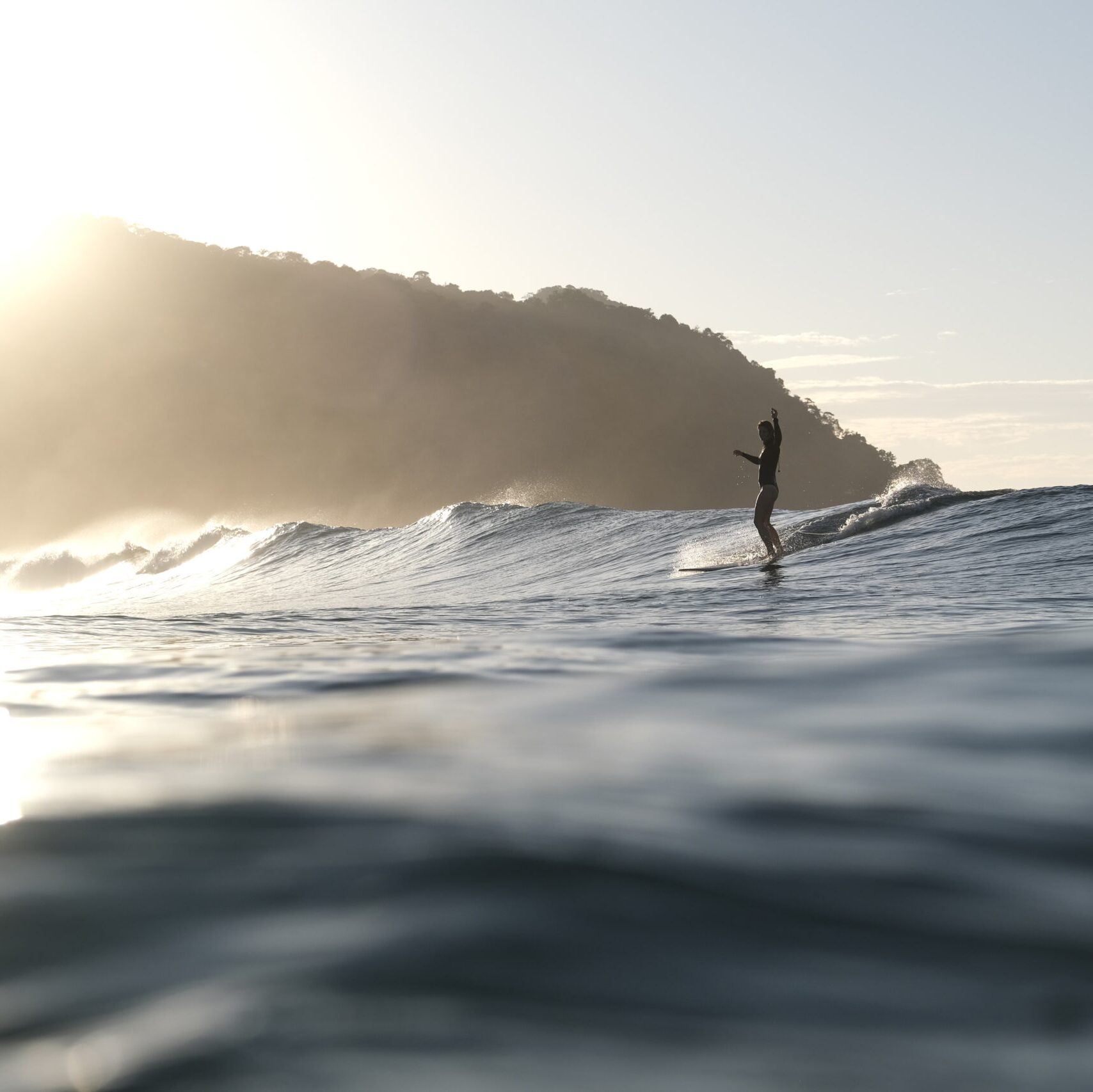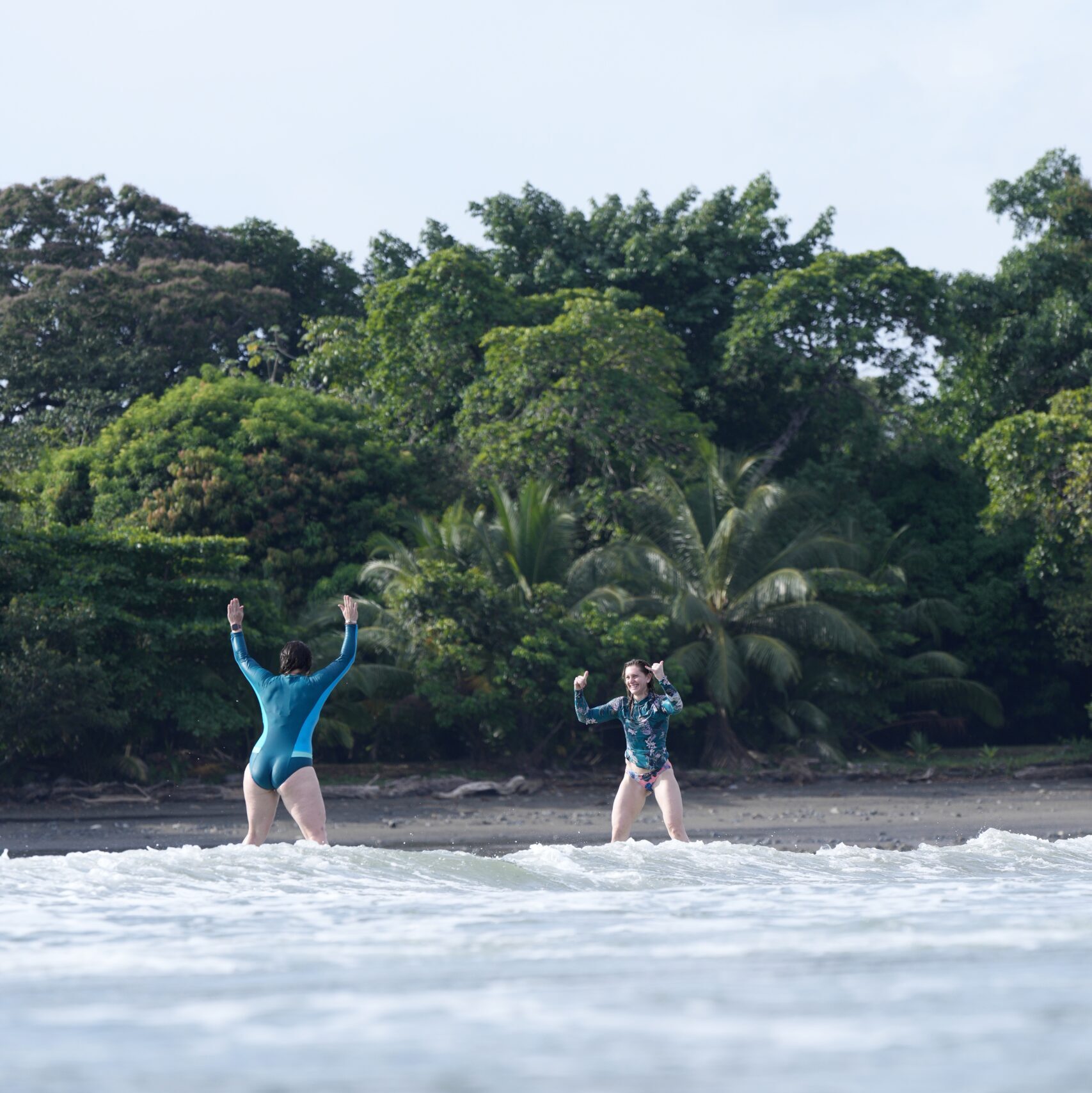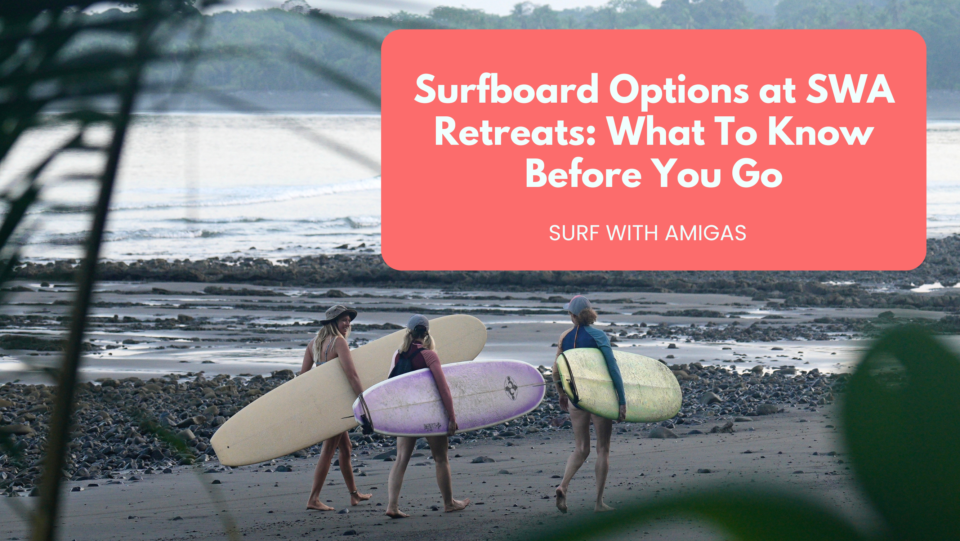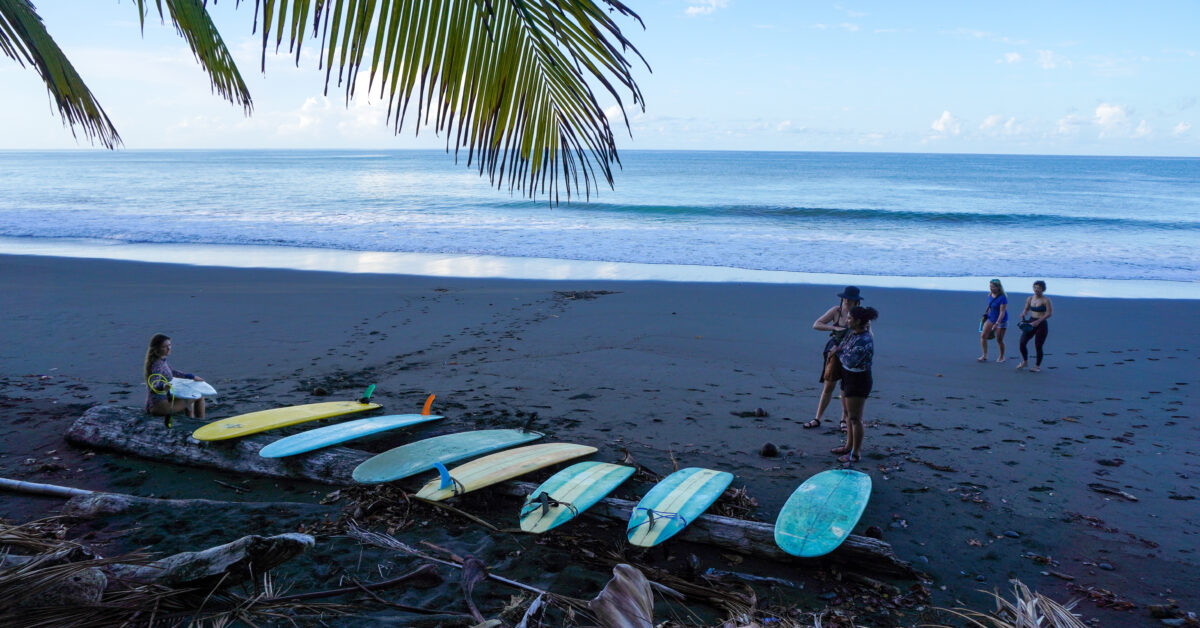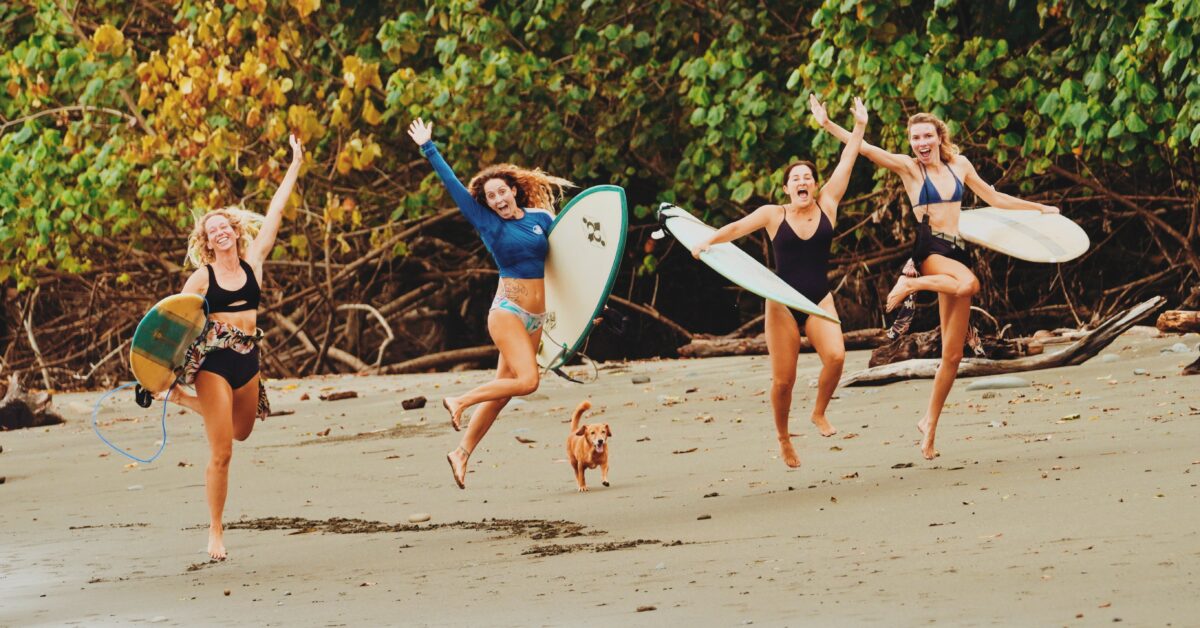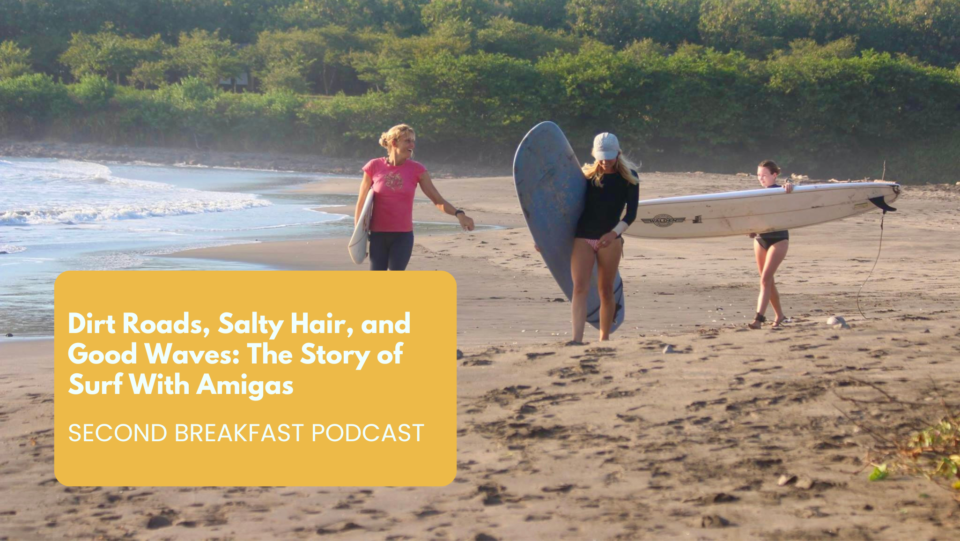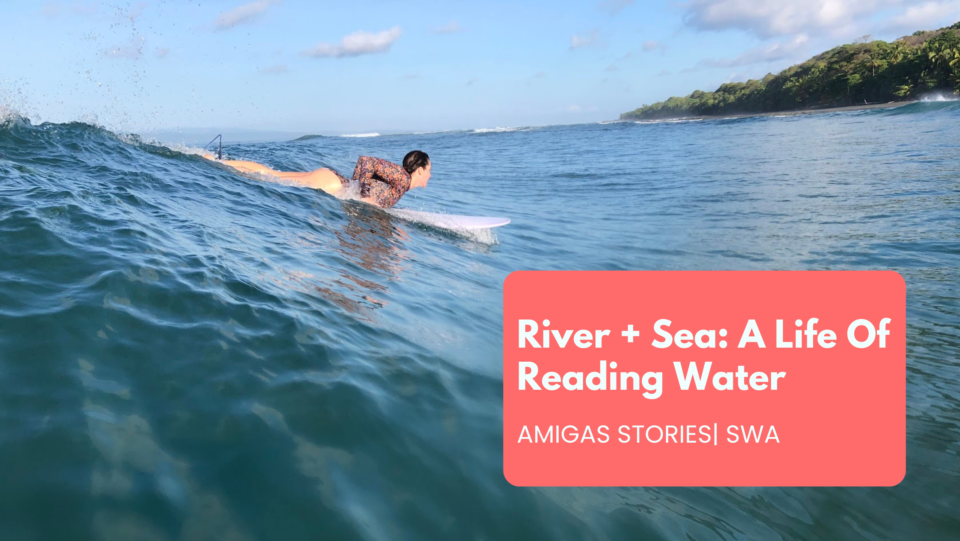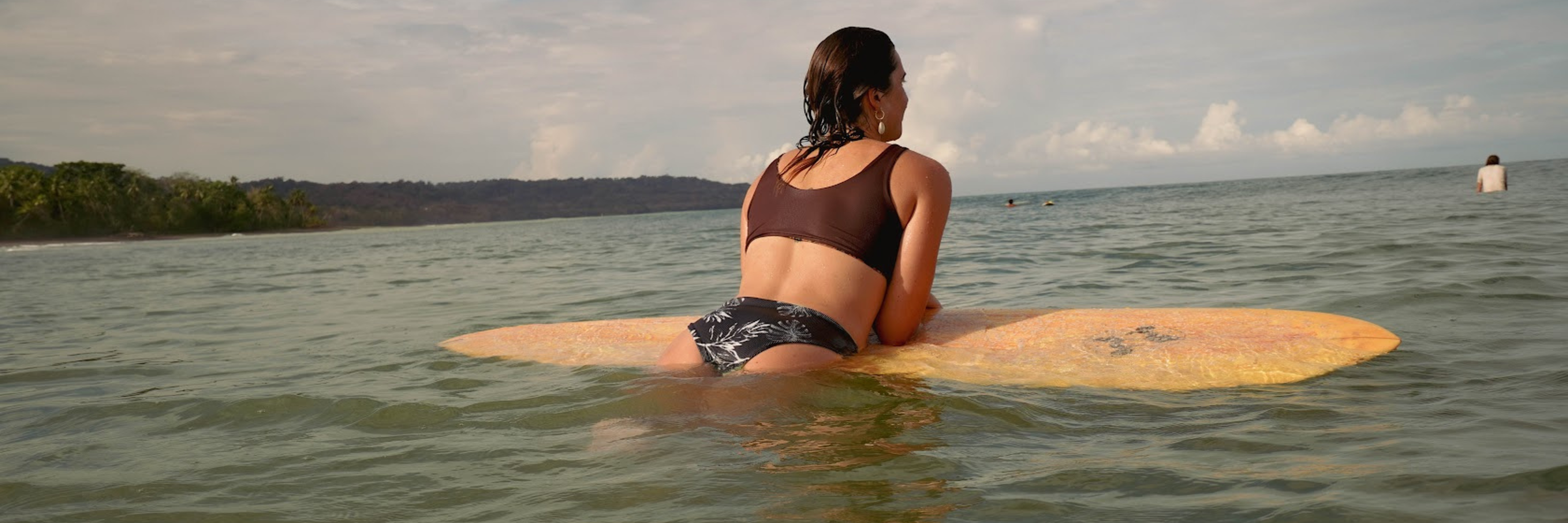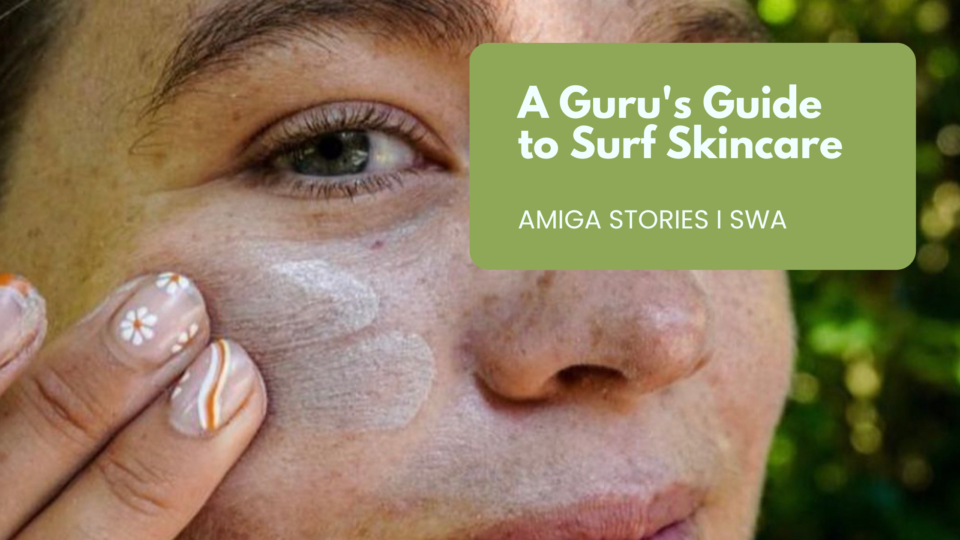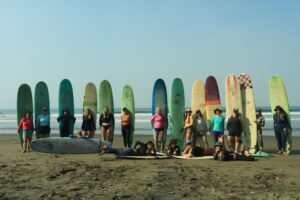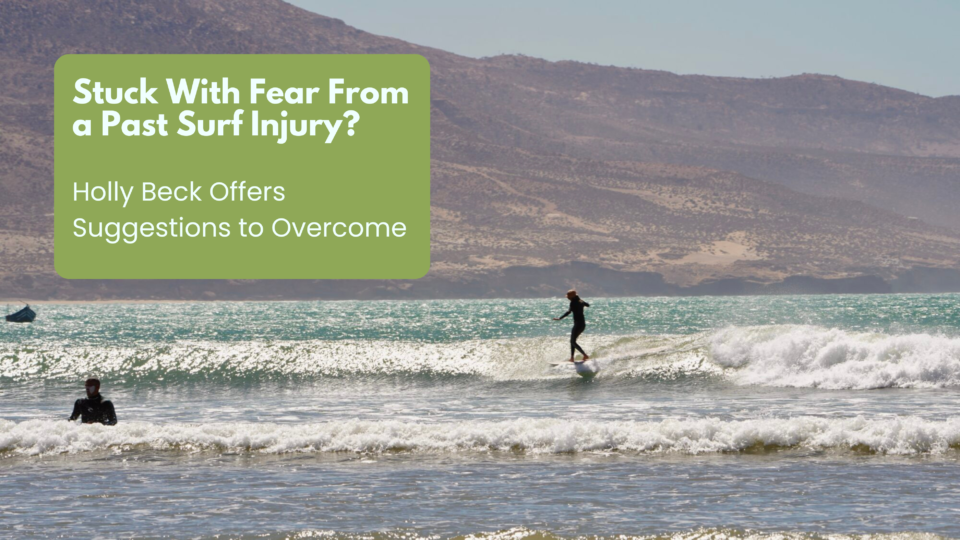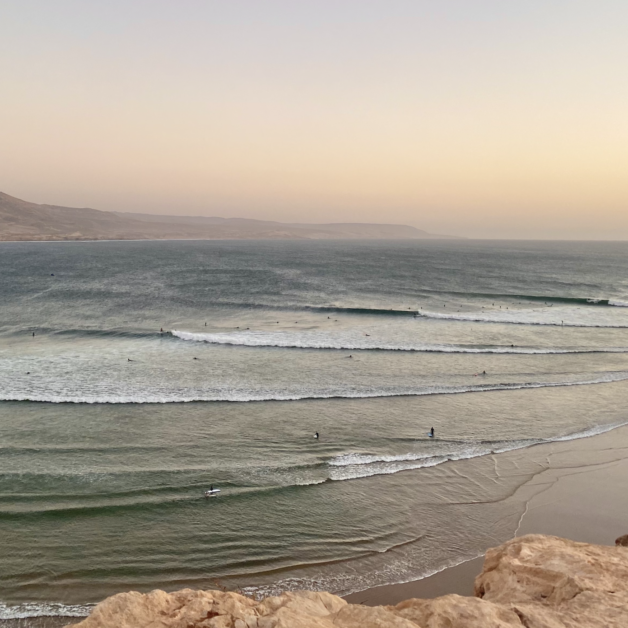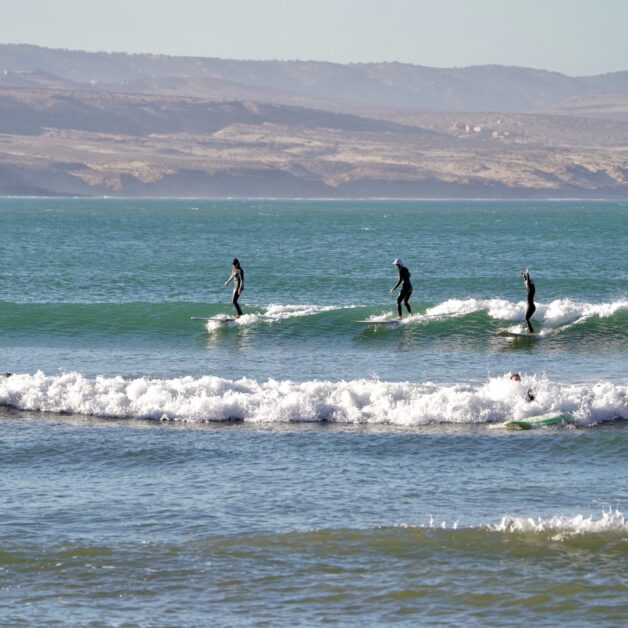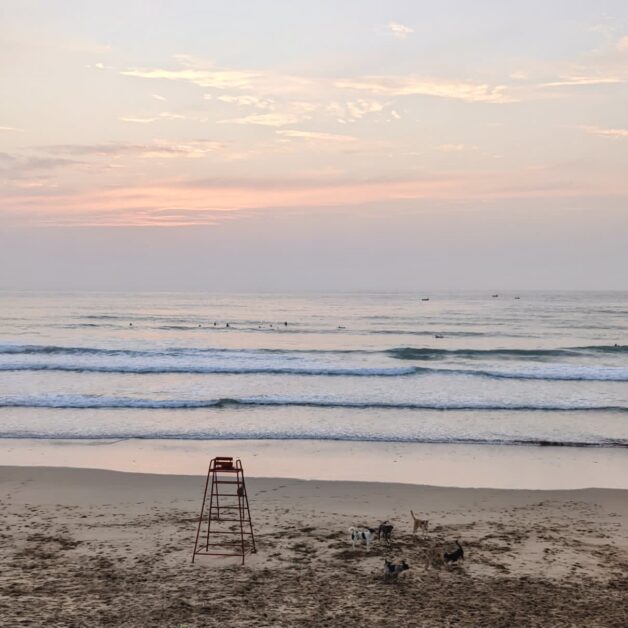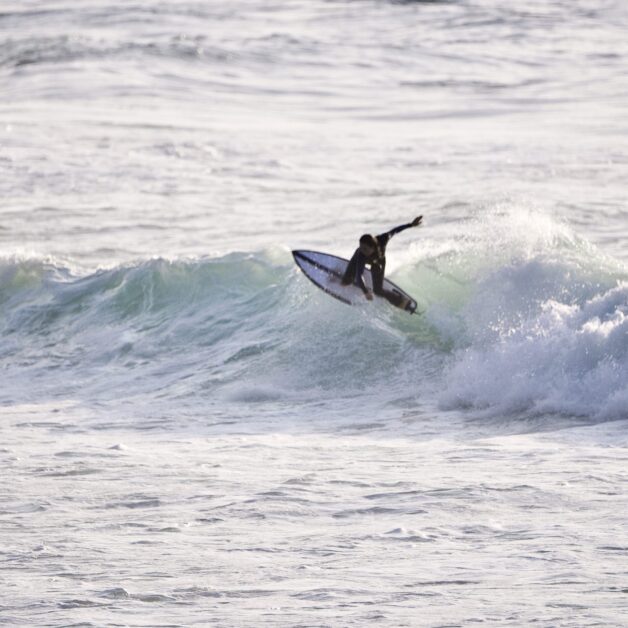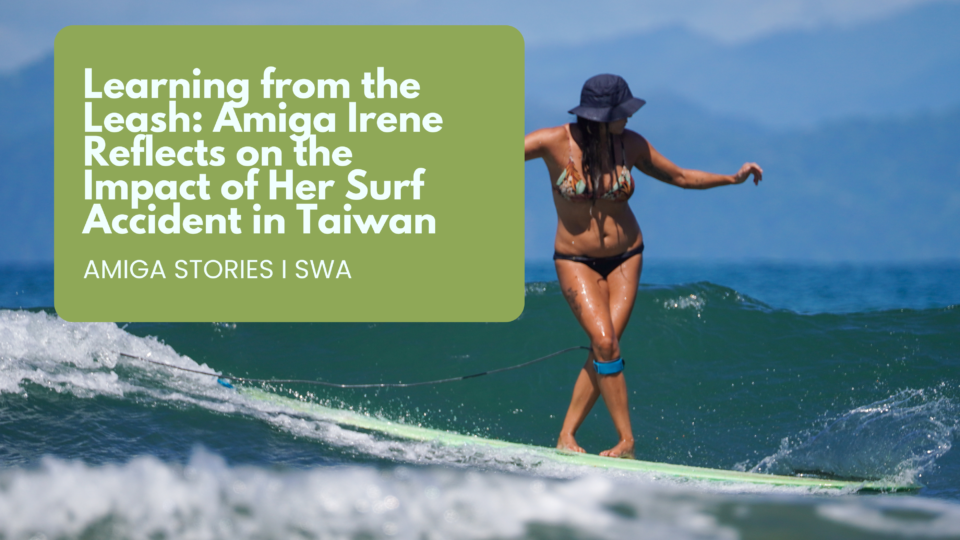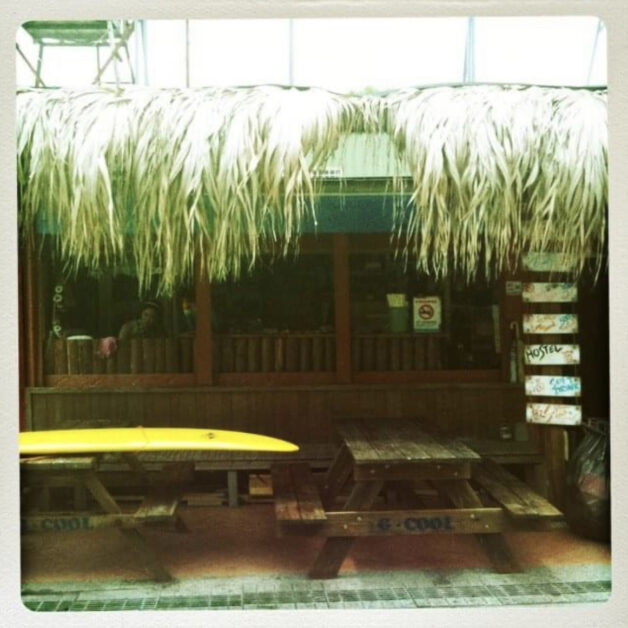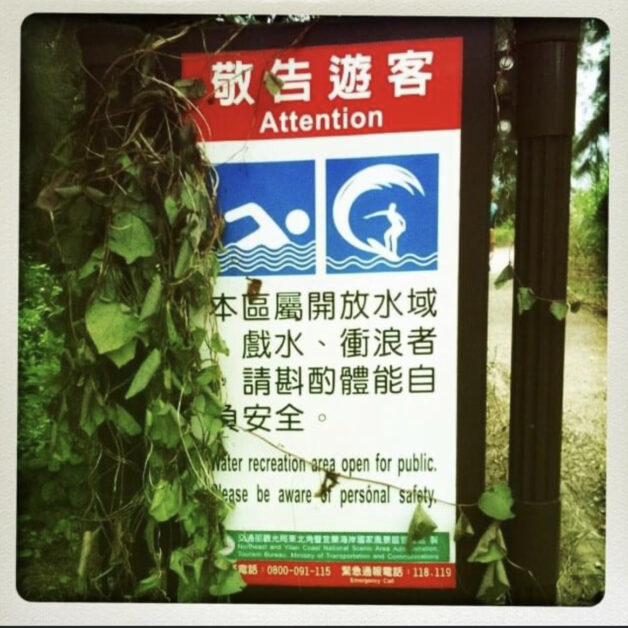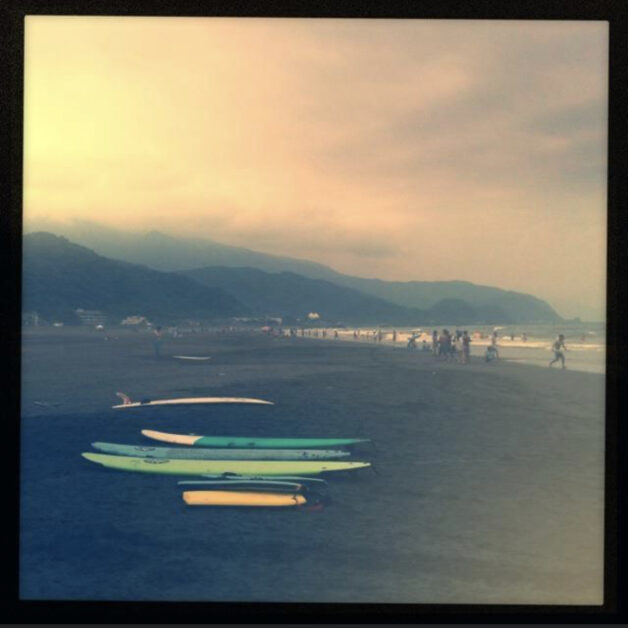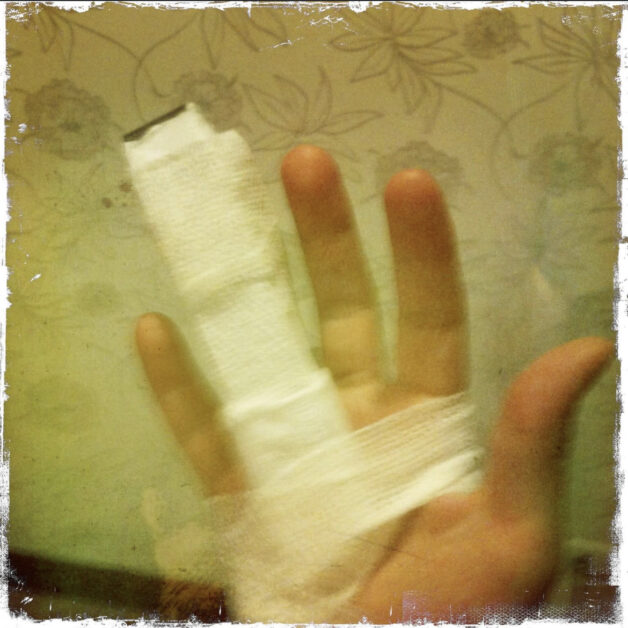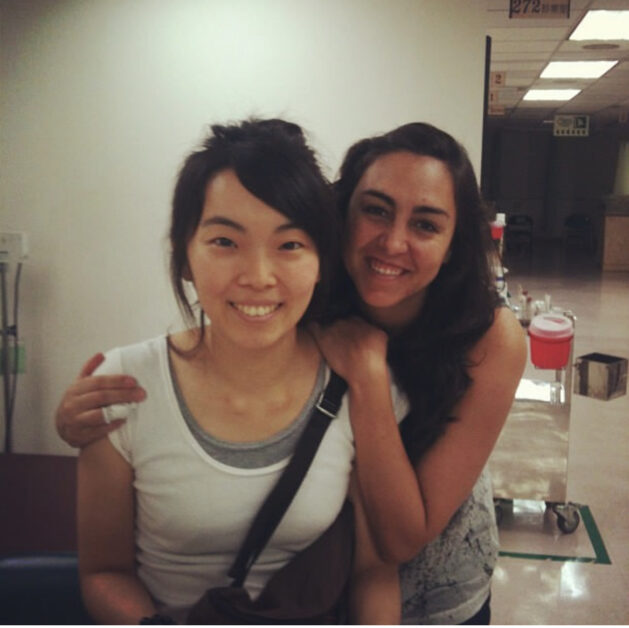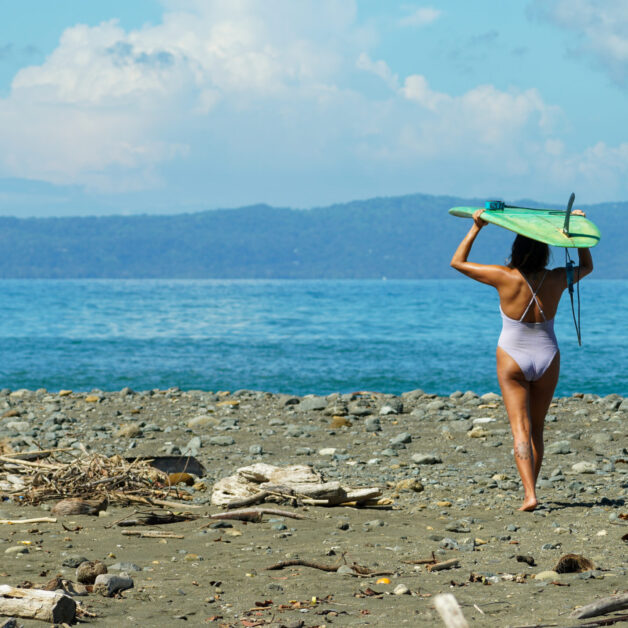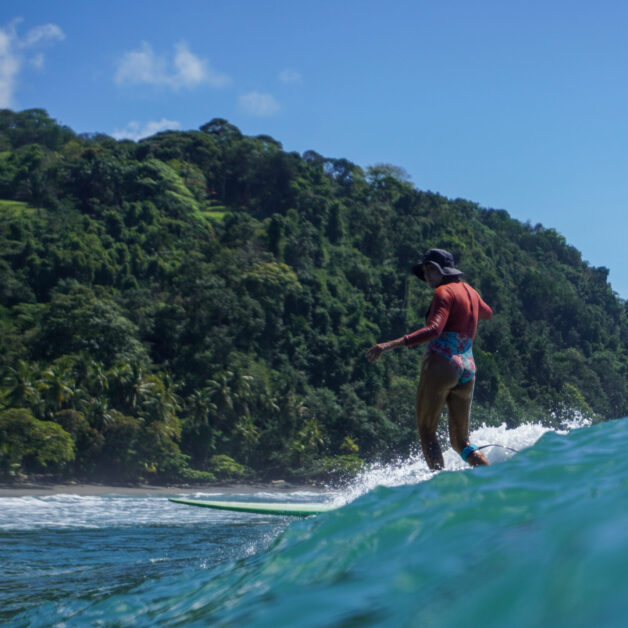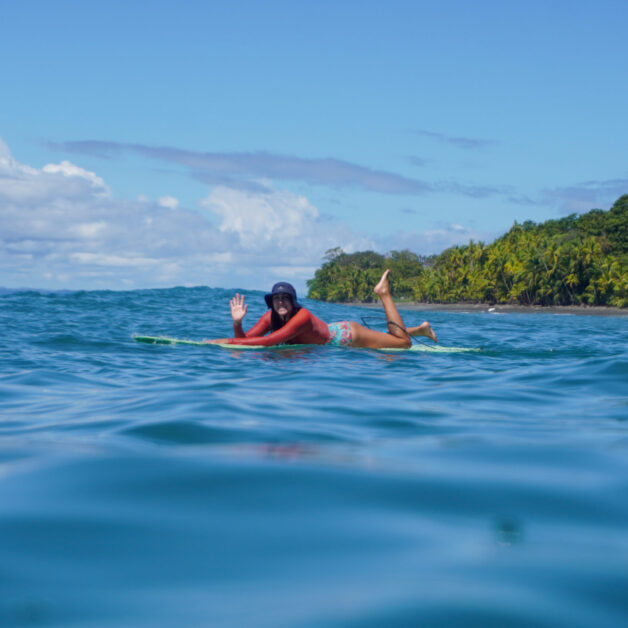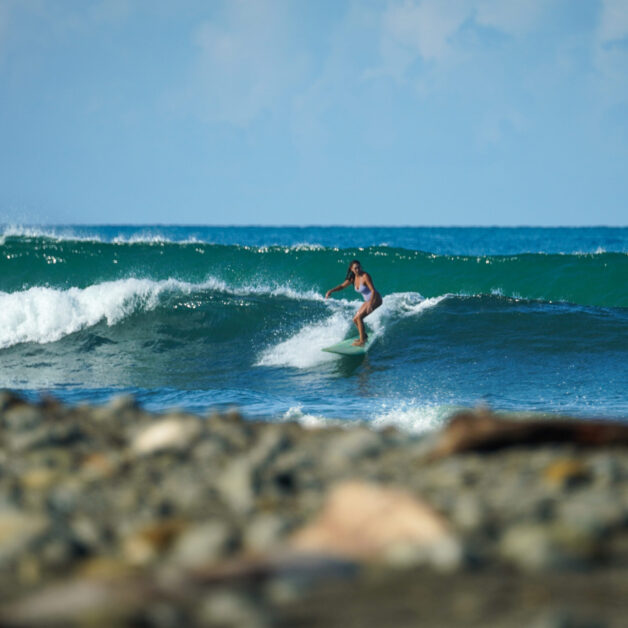It was 2012, I was 32 at the time and I was in Taiwan doing a Traditional Chinese Medicine Internship in the city of Tai Chung. After hearing about the waves in Taiwan, I arrived and instantly started searching for surf spots. I found a spot called Fulong Beach, about 3 hours away from where I was staying by train. After contacting some friends, I decided to join them on a trip there that weekend, arriving a day before to give myself time to explore.
When I arrived to I found a surf shop that also served as a hostel. I booked a room and met the owners, a cute newlywed Taiwanese couple. I went to sleep and put my alarm early for a dawn patrol session.
I rented a longboard that morning and headed out to the beach bright and early. I don’t remember much about that first session, but I remember being happy. I spent the rest of the day on the beach doing yoga and also rented a bike to explore. When the afternoon came I was already exhausted, but knew I only had two days to surf. I wanted to commit to surfing as much as I could, because I had to be back in the hospital for my TCM internship on Monday.
I decided to rent the longest, heaviest board so that I didn’t have to paddle much. As I was entering the ocean, the swell started to pick up, and the whitewash felt stronger. I was walking in, passing the waves by grabbing the nose of my board and through the whitewash. Suddenly a wave took my board, so I pulled it back using the leash. When I turned another wave was already coming, and I didn’t have time to turn the board around so I decided to pass through it by grabbing the tail. I put my hand on the tail with my right ring finger next to the rope string that attaches to the leash.
When the wave came I passed through it by pushing my hand on the tail. With the weight of the wave, the board, and me pulling in the opposite direction, the rope string amputated the tip of my right ring finger. I initially felt like the board had hit my hand, a strong slap. I didn’t think much of it, assuming it was just another bruise. But when I brought my hand to the surface, I saw that I was missing the tip of my finger. I was in shock, it was surreal.
The first thought that came to mind, was: “Ok, don’t panic, you need to get out of the water and control the bleeding.” I walked out of the water and the pain started to hit me. I started to scream, “FUUUUUUCK”, over and over again, feeling the shock, the trauma, the pain, the loss. I remember people were staring at me, feeling uncomfortable with my screams. I didn’t give a fuck. I continued to allow the trauma to move through my body and express it how I needed in that moment. I screamed, “HELP”, and shortly after the lifeguard appeared. He was a young Taiwanese man, I could see he was very inexperienced. He stared at me in shock. I tried to signal to him that he needed to call the ambulance and to help me stop the bleeding. He did nothing.
IN THAT MOMENT, I KNEW I HAD TO TAKE CARE OF THIS MYSELF.
I put my t-shirt around my forearm and tightened it up like a tourniquet. After, I walked to the surf shop where the Taiwanese couple were. When they saw me, they instantly called the ambulance and were very supportive. I put my finger under running water to clean it from the ocean and sand. That’s when I felt the most pain. It was excruciating. I covered it again with clean towels, keeping my arm raised to help stop the bleeding and went into the ambulance that had arrived. The Taiwanese surf couple drove behind me to the hospital.
In the ambulance, I was panicking. But soon came the knowledge of all the spiritual practices I had done in my life. I thought, “I have so many tools, now is the time to use them.” I started doing pranayama (breath work) and mantra repetition (like prayer). When I was focused on this, the pain went away. When I saw my finger again and was immersed in the experience of losing a body part, the pain came back. This was a beautiful realization of how potent our mind is, and how our breath is such powerful tool to relieve pain and stay in the present moment. Calming the nervous system allowed me to stay grounded. It was an incredible teaching moment.
When I arrived to the hospital, the Taiwanese couple stayed with me to help translate what the doctors had to say. I was very lucky. The plastic surgeon who only comes once a month happened to be there that day, and he was able to save my distal knuckle. This might not seem like much, but it gives me a little pad and more mobility of my finger. I am eternally grateful for that. When the surgery was finished, the Taiwanese couple payed for my hospital bills and had called someone from my TCM internship to come be with me. Lisa, a Vancouverite from Taiwanese heritage, went to the same TCM school in Vancouver with me. We were never friends, but she came anyways to be at my side. I will always be grateful for the generosity, kindness, and support shown to me by Lisa and the Taiwanese couple during this time.
After landing back in Taipei, Lisa’s dad came to pick us up from the airport and take us to Lisa’s aunt’s apartment. Her aunt received me with a home-cooked meal of chichek soup, full of heart medicine and herbs. After that I went to my small apartment in Taichung to heal.
I experienced PTSD symptoms for about a month, then slowly but surely they went away. I received lots of support from people in the hospital and neighbors all around. I felt like little angels where appearing right and left to give me love. I was alone but never alone. The great mother was taking care of me through the kind acts of strangers. Taiwanese folk will forever have a very special place in my heart because of this experience.
MY FIRST SURF AFTER THE ACCIDENT WAS A YEAR LATER.
I surfed without a leash in Pacific Beach, San Diego. I had a great session and saw dolphins. It was amazing. My brother was pierced by a sting ray that same day, but that is another story. After that, I continued to surfed on and off until 5 years ago, when I moved to Tofino in Vancouver Island, BC. After the move I really started surfing more consistently. It was a perfect environment for me- since I had use a wetsuit and gloves, I felt protected and confident.
Surfing is one of my passions in life, and I will be a surfer forever. But this experience definitely changed my relationship to surfing. Now I am more aware of the danger of the board. I don’t feel as carefree as I did when I started surfing. Even though I know I have the ability to do certain maneuvers and go for more critical waves, I psyche myself out because of fear [of the accident].
There is so much I still need to work on, but I am very proud of myself for sticking with surfing and not allowing fear to take my bliss away. Now, 10 years later, I can’t imagine my life without surfing and I am grateful for everything that I have learned through this beautiful journey of life. I’m grateful for the medicine of the ocean and for all the beautiful people I meet through this life transforming spiritual practice that is surfing!
MY ADVICE TO OTHERS WOULD BE:
Keep your hands away from the tail! Cultivate deep belly breaths, those will keep you calm in difficult situations! Keep following your bliss! Keep searching for that perfect wave! Keep your heart open to new experiences and new people, you never know what life will gift you with!! May you be safe, happy and free! Namaste.



